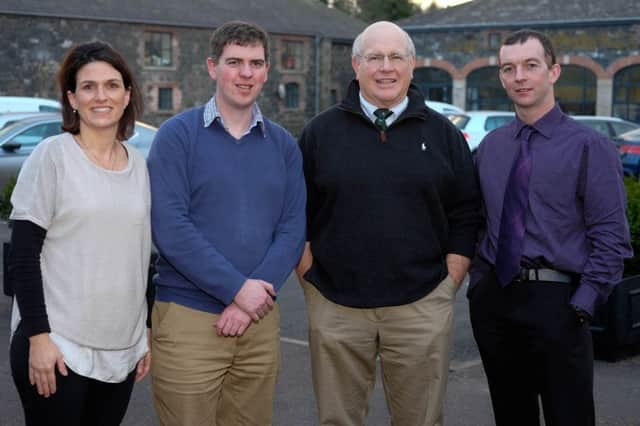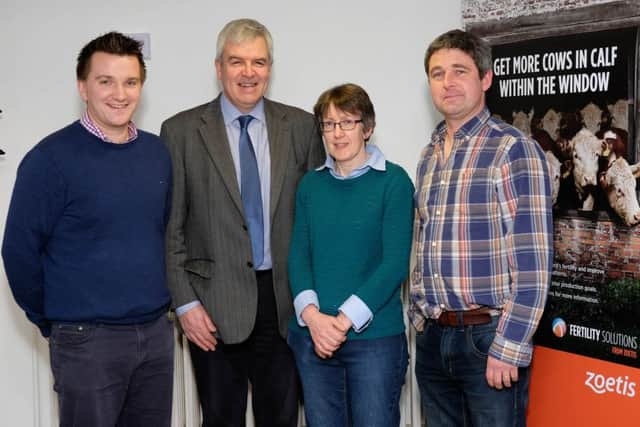Beef fertility workshop inspires local vets


The meeting introduced by Dr Francis Lively, who recently led a beef fertility research project jointly funded by the DARD Research Challenge Fund and AgriSearch involving approximately 1000 cows and heifers on 12 farms throughout Northern Ireland, was a perfect way to link international research with local data.
Professor David Patterson, Ph.D. in Reproductive Physiology at the University of Missouri, highlighted how the US and Europe cannot compete globally on a commodity basis and therefore need to identify their strengths and continue to develop them to provide a long-term sustainable beef industry.
Advertisement
Hide AdAdvertisement
Hide AdThe use of artificial insemination (AI) allows selecting bulls with high accuracy EBVs for calving-ease and gestation length reducing the amount of difficult calvings down the line. AI also provides an opportunity to select for maternal traits EBVs to produce high quality future replacements or terminal sires for superior growth or carcass grades.


David reinforced the need for farmers and vets to work closely together to optimise management of replacement heifers and explained that heifers that conceive earlier during their first breeding season stay in the herd longer and produce more pounds of beef over their lifetime.
He stated that to be successful with timed AI protocols heifers should achieve a minimum of 65% of mature body weight at breeding. Vets can assess the heifer’s reproductive maturity by rectal palpation of the uterus and ovaries six to eight weeks prior to breeding to identify which heifers are suitable.
The opportunities in cows for increasing profits lie in managing females from the later calving intervals forward towards the first and second calving intervals. Compact calving herds see 61% of the calves born by day 21, 85% by day 42 and 94% by day 63.
Advertisement
Hide AdAdvertisement
Hide AdLactation anoestrus in cows is an unavoidable physiological phenomenon which can be “managed” through minimising calving difficulties and managing body condition scores at calving and breeding.


Breeding protocols based on CIDR® in conjunction with prostaglandin(PG) and GnRH are licensed for use in cycling and non-cycling cows (i.e. lactation anoestrus) and heifers, can be used in conjunction with fixed time AI and are an effective tool to help control reproductive physiology.
David also advised on the control of infectious infertility in both heifers and cows and stated that vaccination protocols should be implemented at least four weeks prior to breeding.
Finally he concluded that the expanded use of reproductive and genomic technologies provides an opportunity for the future to improve efficiency and profitability of global beef production.
Advertisement
Hide AdAdvertisement
Hide AdThe workshop ended with a very practical presentation by Mr Artie Birt, one of the farmers involved in the AFBI beef fertility research project, who synchronized 180 cows and 40 replacement heifers in 2016.
Artie was able to reduce the number of bulls on farm from seven to two thanks to the use of timed AI in his herd and said it allows greater use of top quality maternal and terminal sires whilst reducing the need for heat detection and tightening of the calving pattern.